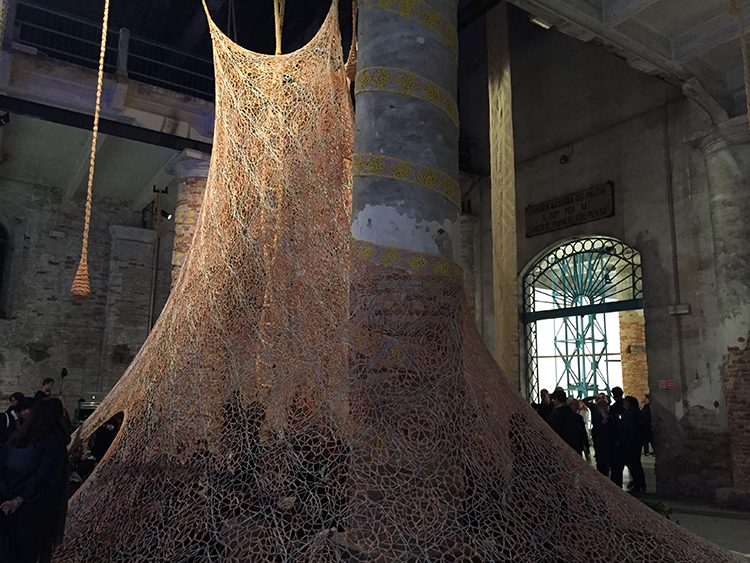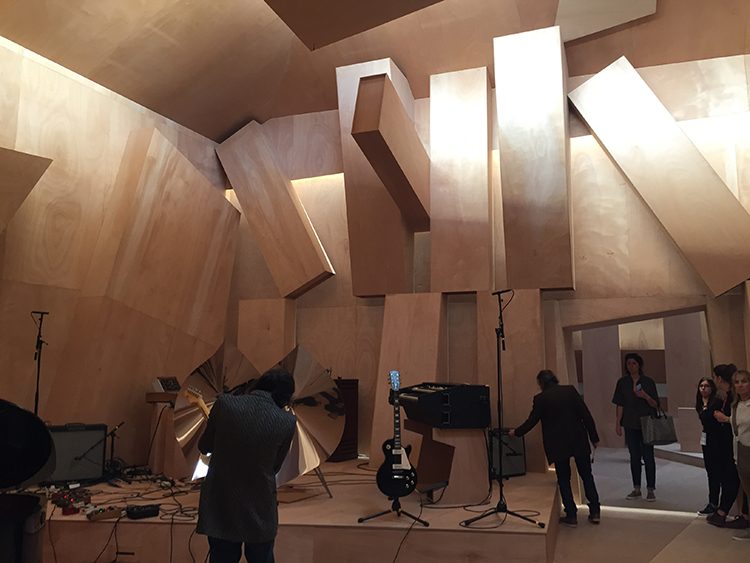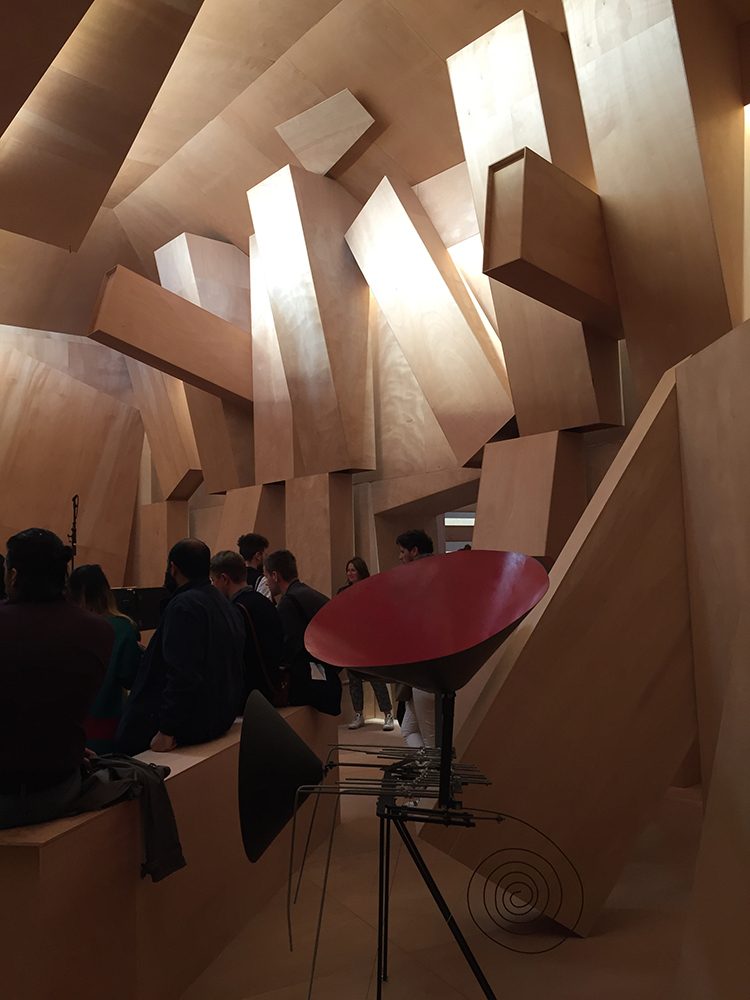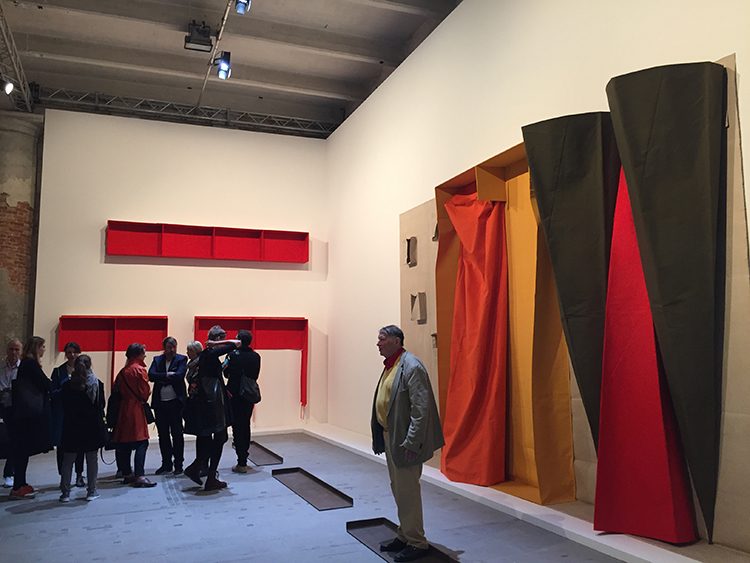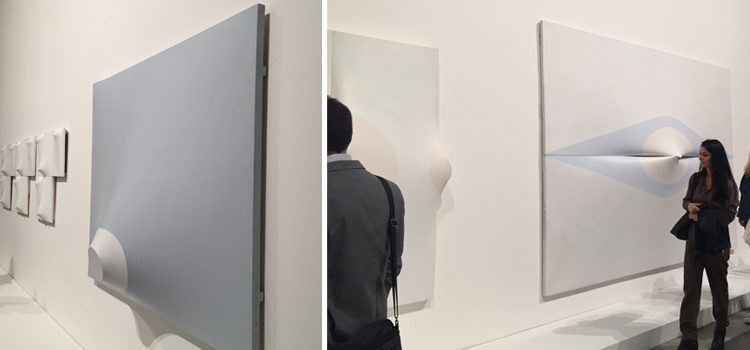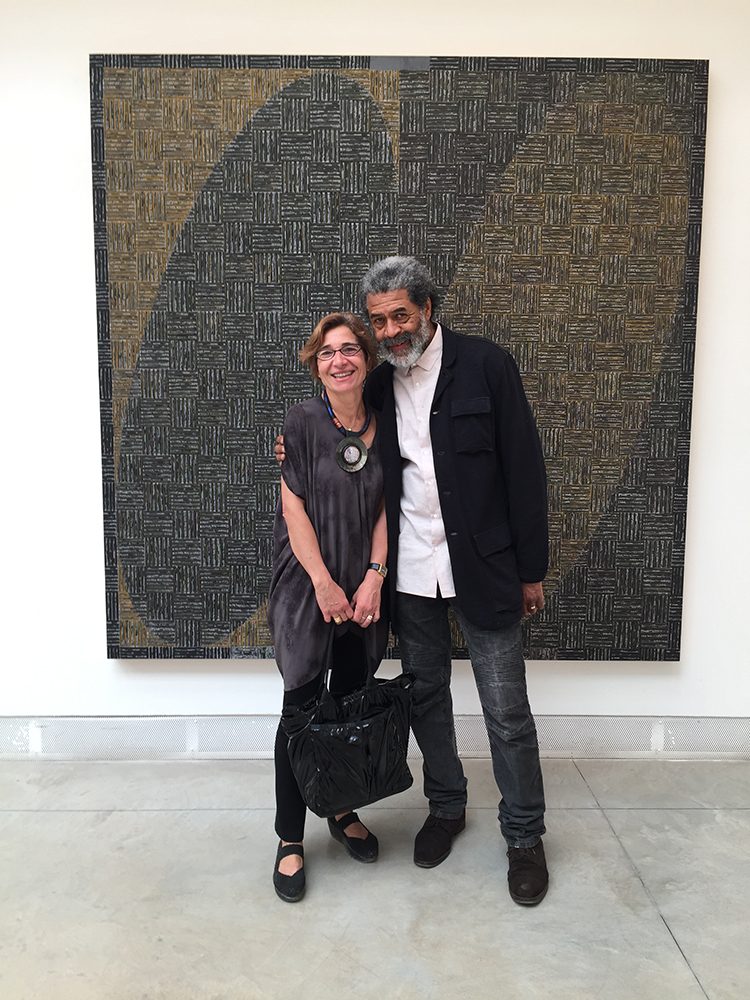
Mann im Anzug – dithyrambisch II (Man in Suit—Dithyrambic II), 1976. Distemper on canvas, 98 1/2 x 73 1/2 in. Private collection
When you visit the Markus Lüpertz exhibition, you might find yourself asking, “what is the dithyramb?” You’d find that word repeated over and over again on several labels. So let me quote: he said, “I didn’t want to paint figuratively anymore, so I invented something abstract that is also figurative, a dithyramb.” So, in there you feel the contradiction; he’s challenging us to figure out what he’s saying. He imposes that term on paintings that ostensibly present a tree trunk, roof tiles on a house, a helmet, a traditional cake form in Germany, a stalk of wheat, a man’s suit, such disparate and trivial objects, and again he paints them with authority and drama, instilling their trivialness with importance, or at least the importance of a painted object.
He defies normal expectations; it’s not really a depiction and it’s not figurative, but it’s not abstract. Those are the kind of norms that he’s discarding very vociferously. When we expect things to be part of a landscape, none of them appear outdoors; they seem to inhabit a flat, ill-defined, poster-like environment. That log does not rest in a landscape, it can hardly be described as a still life, is it now a monument? Those are the kinds of questions that he’s prompting us to engage in as we look closely.
I quote Lüpertz again: “the dithyramb was my totally individual contribution to abstraction, abstraction not in the sense of rational analysis or reduction, but as in the invention of a nonsense object.” He embraces riddles and mysteries as fundamental to art. He says, “art survives only in riddles, only in mystery can art’s eternal truth be retained, therefore the artist must be, as Nietzsche demands, a seeker of riddles, because those who seek to solve riddles are many.” The reference to Nietzsche is important because this whole Dionysian poetic term from the poetry of antiquity re-emerged in the late nineteenth and early twentieth century in the German-speaking world and had a resonance for him.
Dorothy Kosinski, Markus Lüpertz exhibition curator and Phillips Director

